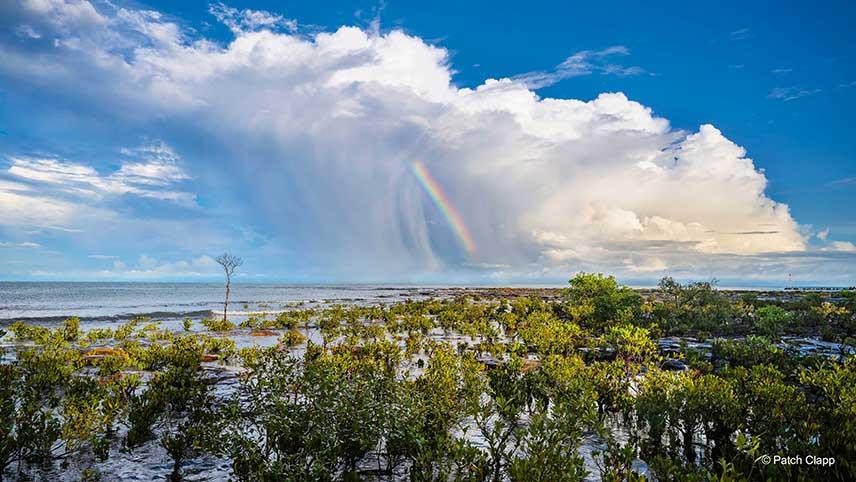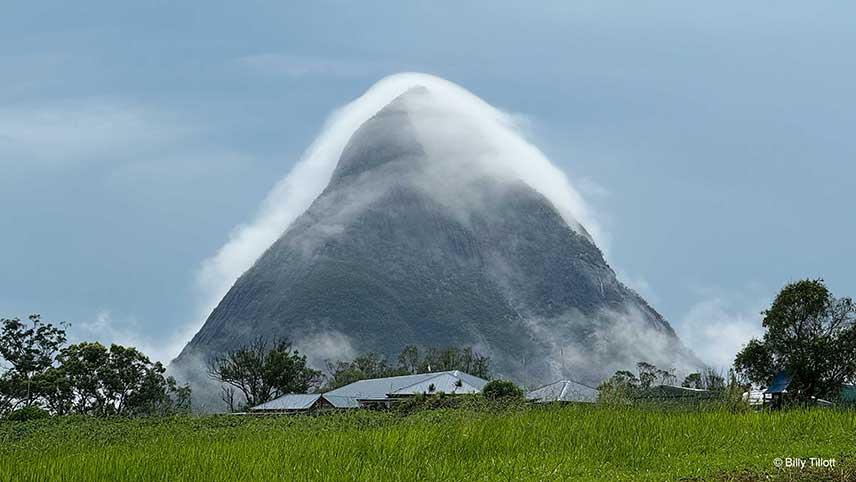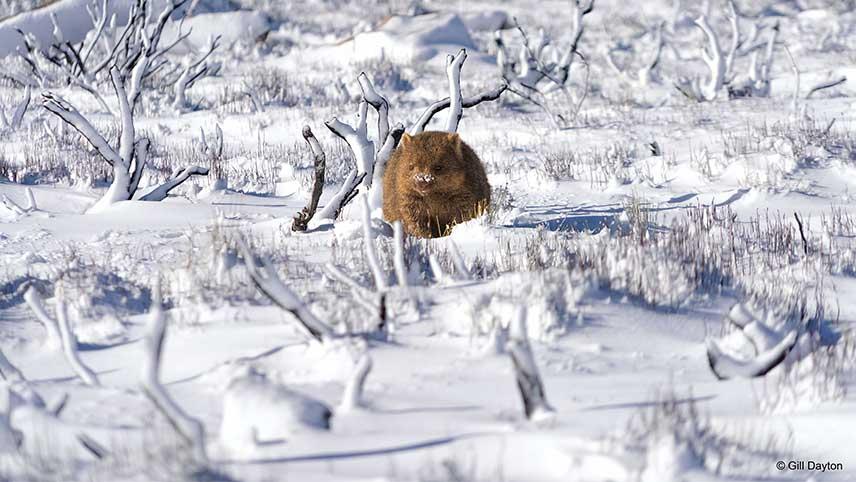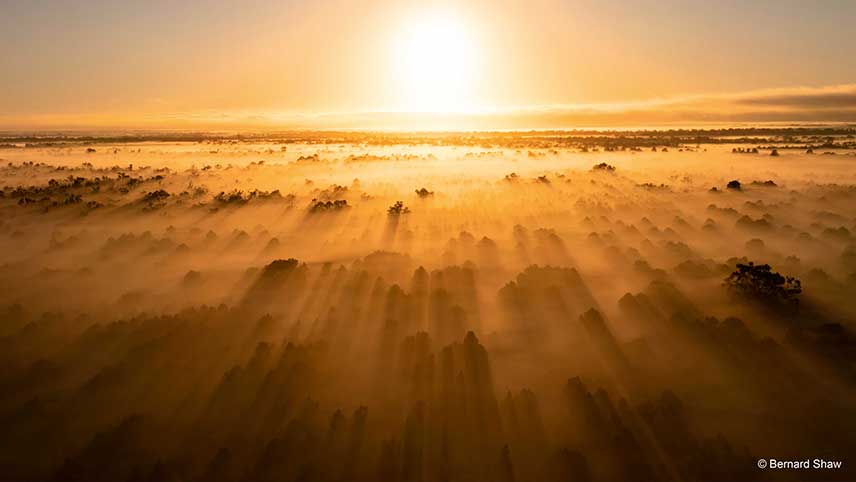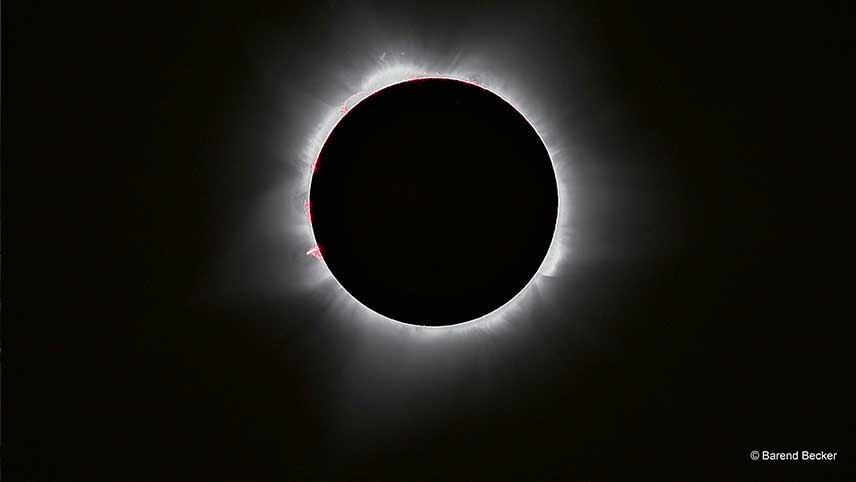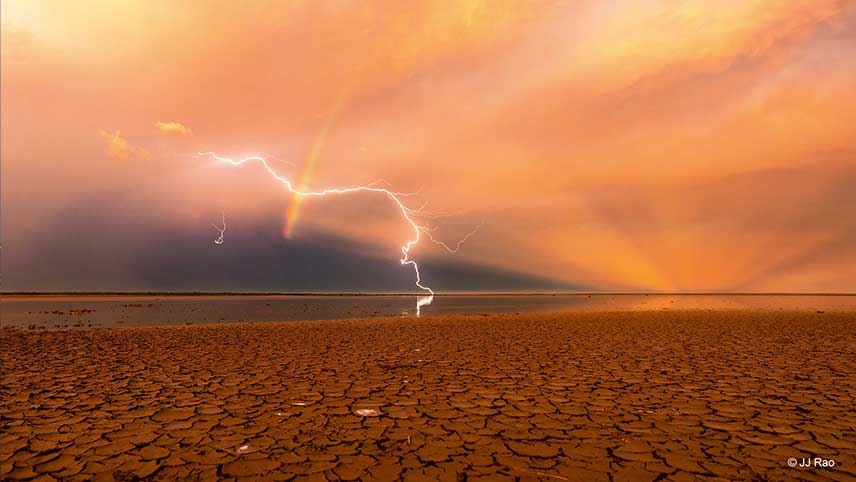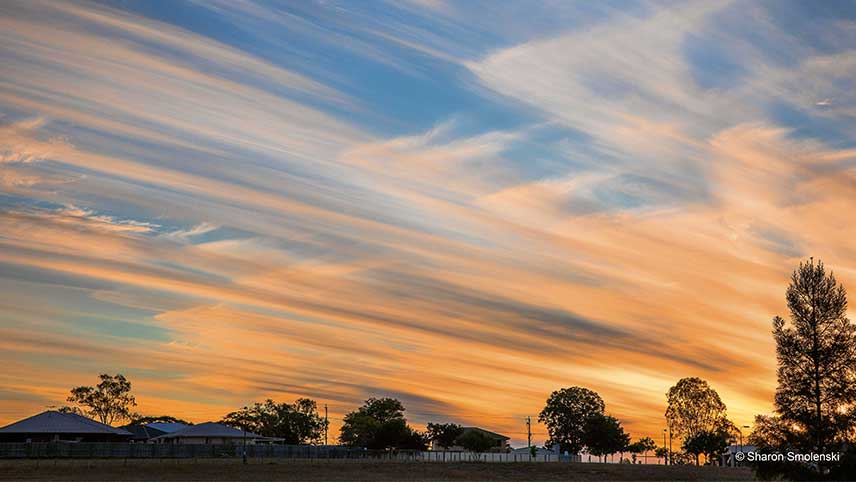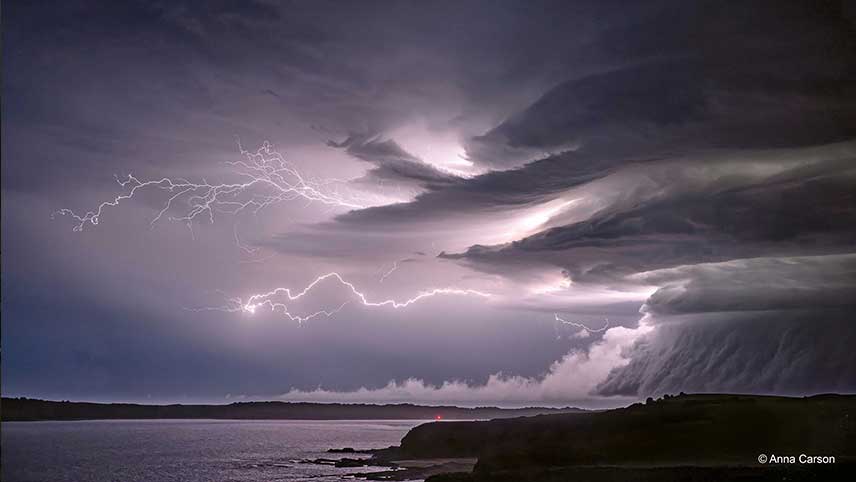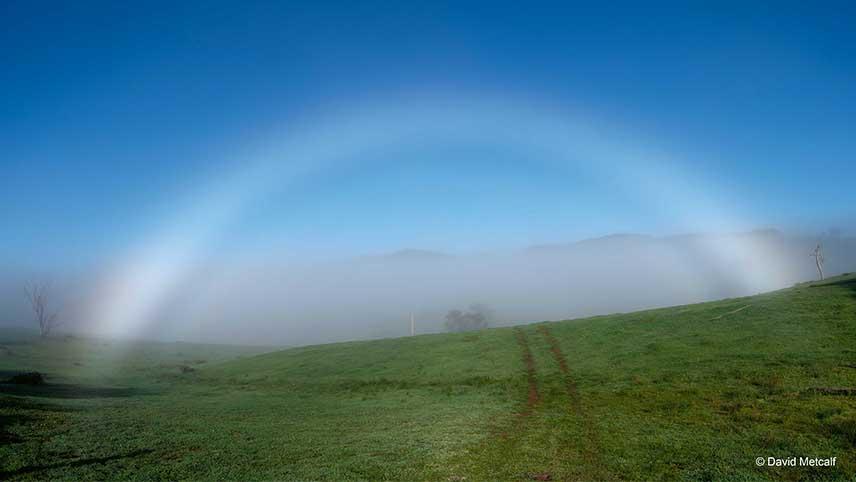
Storm chaser David Metcalf was heading from his home in Wollongong to the central tablelands region in the hopes of catching a storm when he stumbled across another weather phenomenon.
Leaving early in the morning to catch the storm with a friend, they took a short cut through Goulburn, New South Wales.
They were surrounded by fog, which started lifting as they drove north of Crookwell.
"As we were driving through that area, the fog was lifting, and the sun just started to filter through these farmer's paddocks really nicely," David said.
"So, we stopped to take some photos of the sun rays filtering through the trees behind us.
"But then as we pulled over to the side of the road, we could see down in the little farmer's valley that there was just like this really nice fogbow that had just started to form."
Wandering over to the farm gate, David snapped a photo of the rare phenomenon.
Despite having about 20 years of weather chasing history, it was only the third time he had seen a fogbow, an optical effect caused by the light bending through the fog.
Because the water droplets that make fog are smaller than raindrops, the spectrum of colours normally seen in a rainbow are harder to distinguish in a fogbow, appearing as a faintly coloured arc of 180° or more.
And that was what David witnessed early that morning.
"It was kind of like a white rainbow, but a bit closer to the ground than you would typically see from a rainbow. It kind of looked like it was touching the ground, not actually that far away from where you're standing," David said.
Snapping the photo, featured as the June image in the 2025 Australian Weather Calendar, hobby photographer David added to his catalogue of photos of weather events, a passion he developed after a gift from his dad.
"He gave me one of his really old film cameras when I was pretty young, so I just sort of was playing around with that," he said.
"And then I realised a bit later on, when I was in university, that having a passion for weather, if you've also got a bit of a passion for photography, you can capture these events that you don't see all the time, like your storms and sunsets and sunrise.
"This one, for example, we had the beautiful fog bow in the morning, and then we sort of didn't really get any decent storms that day.
"But then, as the cold front passed, there was a beautiful sunset, with these really lovely mammatus clouds.
"You just get a bit of everything, and it's always so worth it when the weather's so dynamic. I just like seeing the constantly changing environment."
As an engineer by day, David said he finds storm chasing and weather photography to be a creative outlet.
"I like photography for how it just takes away from the mundane, just getting out and seeing different things and also helps you travel around to different places," he said.
"Without it, I wouldn't have imagined I'd find myself at seven o'clock in the morning just north of a little town called Tuena."
The Murray–Darling Basin Authority (MDBA) and the Bureau of Meteorology (BOM) are portfolio agencies under the Australian Department of Climate Change, Energy, the Environment and Water.
The MDBA and BOM work collaboratively, to provide each other with the best available information, to support future decision making during changeable conditions.
While not all the photos in the Bureau of Meteorology’s 2025 weather calendar are from within the Basin, they are so stunning we decided to share them below.
